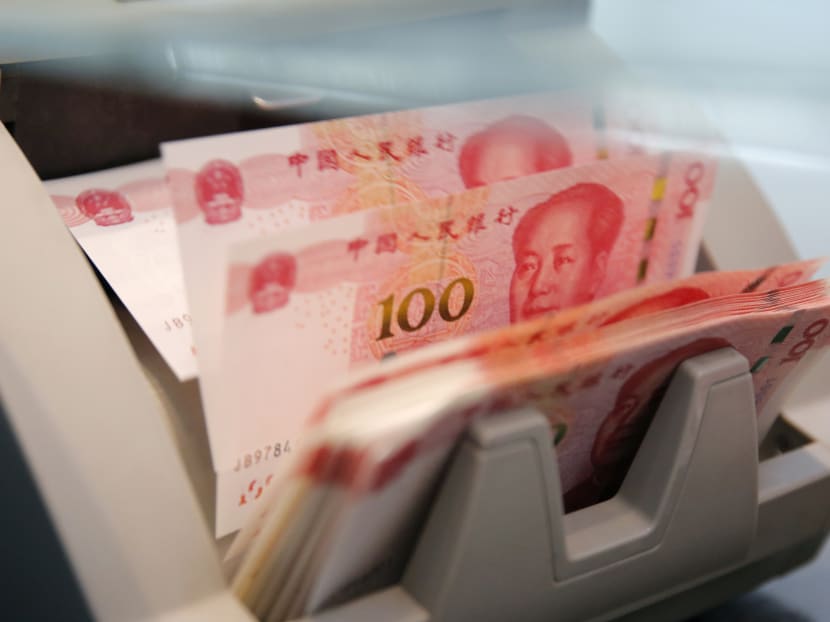S’pore to include yuan investments in foreign reserves
SINGAPORE — With less than four months before the Chinese yuan is included in the International Monetary Fund’s elite basket of reserve currencies, Singapore’s central bank announced on Wednesday it will include its renminbi financial investments in its official foreign reserves (OFR) from June, a move analysts say is symbolic of the two countries’ close bilateral ties and the growing significance of China.

Reuters file photo
SINGAPORE — With less than four months before the Chinese yuan is included in the International Monetary Fund’s elite basket of reserve currencies, Singapore’s central bank announced on Wednesday it will include its renminbi financial investments in its official foreign reserves (OFR) from June, a move analysts say is symbolic of the two countries’ close bilateral ties and the growing significance of China.
“The decision to include MAS’ (Monetary Authority of Singapore) RMB investments as part of Singapore’s official foreign reserves is Singapore’s strongest vote of confidence in the RMB to date,” said Mr Guy Harvey-Samuel, group general manager and CEO, HSBC Singapore.
“As economic and financial reforms continue in China, the RMB is likely to play a much more prominent role on the world stage, and should increasingly factor in reserve managers’ allocations. Indeed, HSBC research has shown that 32 central banks now invest in the RMB, compared to three in 2012.”
The MAS has made RMB financial investments through China’s Qualified Foreign Institutional Investor and interbank bond market schemes since 2012, but did not include those investments in its official foreign reserves as there were previously restrictions on the repatriation of these funds.
During the past year, China has taken significant steps to liberalise access to its foreign exchange and securities markets for foreign institutional investors, including relaxing controls on foreign investors’ access to its domestic markets and scrapping quota controls on the interbank bond market. Restrictions on inbound and outbound remittances have been lifted and no prior approval is now required for the repatriation of funds invested in China’s interbank bond market.
MAS said on Wednesday its move recognises the steady and calibrated liberalisation of China’s financial markets, and the growing acceptance of RMB assets in the portfolios of institutional investors.
“The inclusion of RMB assets in MAS’ OFR is timely. China’s calibrated financial liberalisation in the past year has encouraged growing international acceptance of the RMB,” said MAS deputy managing director Jacqueline Loh.
The decision to include the RMB in its official foreign reserves is not surprising and is a signal of China’s growing economic influence, said analysts.
“After the IMF recognised them, it’s a natural step for us to recognise them too in our OFR. We cannot neglect the fact that China is becoming bigger and bigger in terms of portfolio flows from institutional investors but also in real investment flows in terms of foreign direct investments,” said UOB economist Francis Tan.
It is also “part of MAS’ plan to diversify their reserves holdings instead of just depending on a few currencies”, added Mr Bernard Aw, market strategist at IG.
MAS’ announcement comes ahead of the announced inclusion of the RMB in the IMF’s Special Drawing Rights (SDR) currency basket from October.
The IMF said in November that the RMB had met the criteria of being “freely usable”, or widely used for international transactions and widely traded in major foreign exchange markets, and allowed it to join the dollar, euro, pound and yen in the SDR basket. The yuan’s inclusion is the first time the SDR’s currency composition has been changed since 1999, when the euro replaced the Deutsche mark and French franc.
No immediate impact on Singapore’s reserves is anticipated, said Ms Selena Ling, head of treasury research and strategy at OCBC.
“MAS had said CNY assets were already part of MAS’ foreign assets. Longer-term implications would then depend on the medium-term CNY prospects,” she added.
According to an IMF report last year, the yuan accounted for 1.1 per cent of its members’ official reserves in 2014, compared with 63.7 per cent for the US dollar.
When the yuan’s addition into IMF’s SDR takes effect, the Chinese currency will have the third largest weighting in the basket at 10.92 per cent. Weightings for the other SDR currencies will be 41.73 per cent for the dollar, 30.93 per cent for the euro, 8.33 per cent for the yen and 8.09 per cent for the British pound. The dollar currently accounts for 41.9 per cent of the basket, while the euro accounts for 37.4 per cent, the pound 11.3 per cent and the yen 9.4 per cent.
“Since the Chinese currency is going to be part of the SDR, it’s only logical that central banks around the world would be including the Chinese currency in their reserves. We are just being early,” said CIMB Private Banking economist Song Seng Wun.





